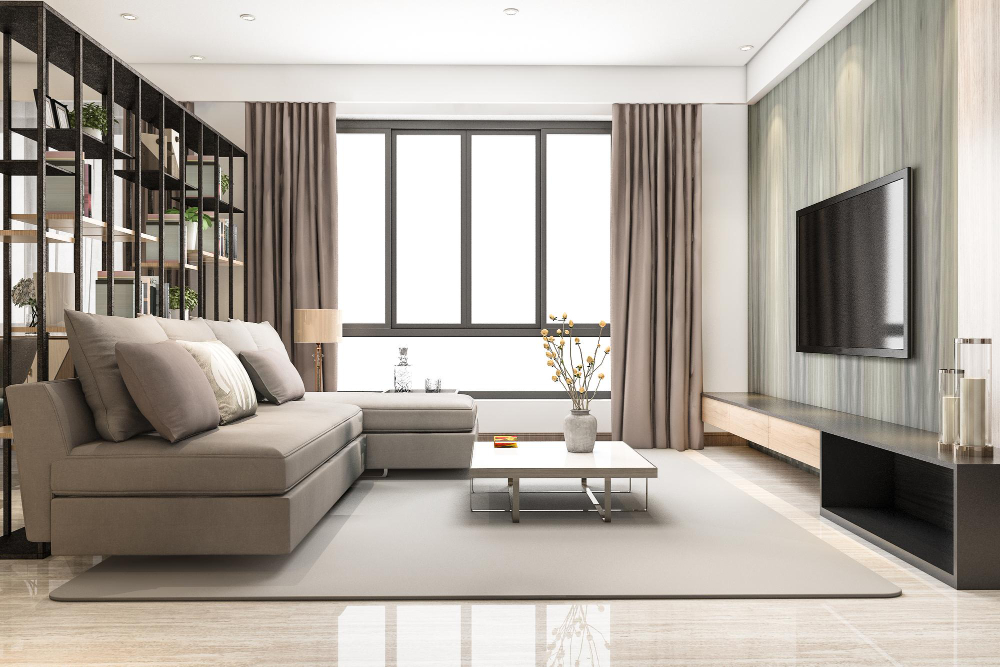Introduction
When it comes to designing your dream home, the living room takes center stage. It’s where you relax, entertain guests, and spend quality time with your family. In this article, we’ll explore the key elements of a well-designed living room and provide you with practical tips to create a space that reflects your style and meets your needs.
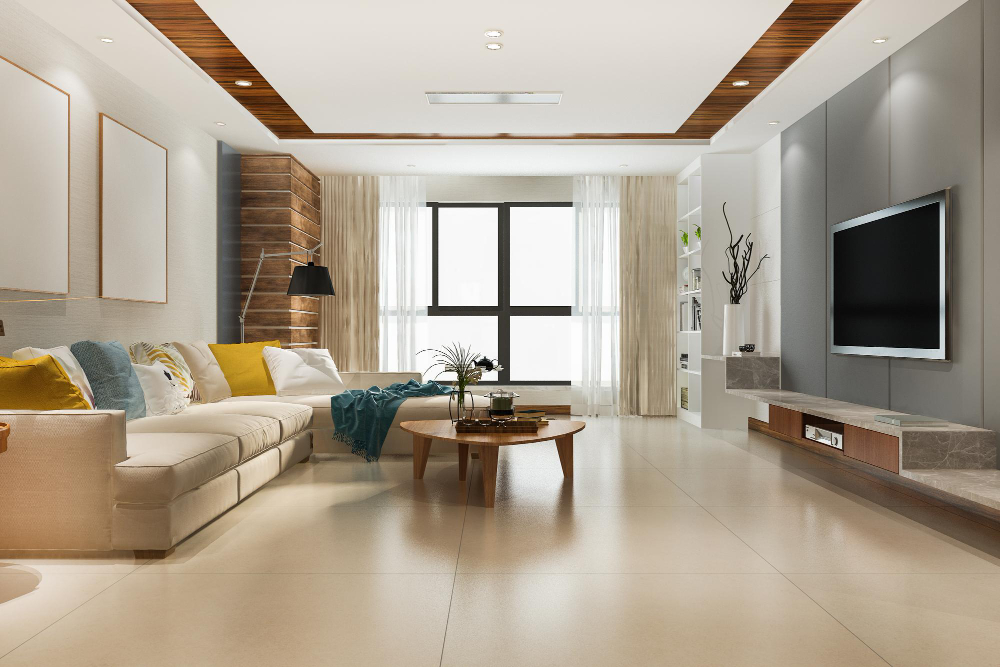
Defining Your Vision
In the process of creating the perfect living room, it’s imperative to begin with a clear understanding of your vision. This initial step sets the tone for the entire design journey and ensures that your living space aligns with your preferences, needs, and personality.
Style Preferences
The first aspect of defining your vision revolves around your style preferences. Your living room should be an extension of yourself, so consider what style resonates with you the most. Here are some popular design styles to contemplate:
1. Modern:
- Emphasizes clean lines and simplicity.
- Incorporates sleek materials like glass and metal.
- Utilizes a neutral color palette with pops of bold color or texture.
2. Traditional:
- Evokes a timeless and classic feel.
- Features rich wood furniture and ornate details.
- Often uses warm, muted colors.
3. Bohemian:
- Embraces a free-spirited, eclectic vibe.
- Mixes patterns, colors, and textures.
- Showcases a wide array of art and decor from various cultures.
4. Eclectic:
- Celebrates individuality by combining elements from different styles.
- Encourages creativity and self-expression.
- Allows for a diverse range of furnishings and decor.
Understanding which style resonates with you will serve as a foundational guide for making design decisions that align with your taste.
Functionality
Beyond style, you must also consider the functionality of your living room. What do you intend to use this space for? Different living rooms serve different purposes, and it’s crucial to tailor your design to match your specific needs. Here are some questions to help you determine the functionality of your living room:
What will you primarily use the living room for?
- Is it primarily a space for relaxation, where you’ll unwind after a long day?
- Will it double as an entertainment hub, with a focus on hosting movie nights or game days with friends and family?
- Do you need a workspace incorporated into the living room for remote work or studying?
- Will it be a multifunctional area, serving various purposes?
By identifying the primary function or functions of your living room, you can make informed decisions about furniture, layout, and decor that cater to those needs. This ensures that your living room is not only visually appealing but also highly practical and conducive to your daily activities.You Can Explore Exclusive Collection Of Living Room Furniture Only At Twigs Direct
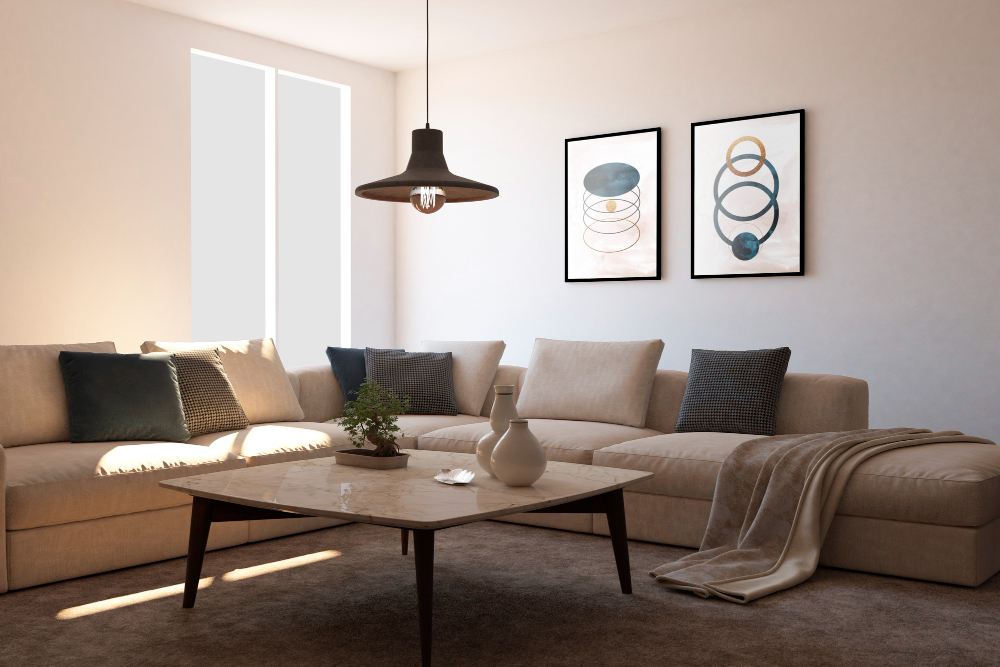
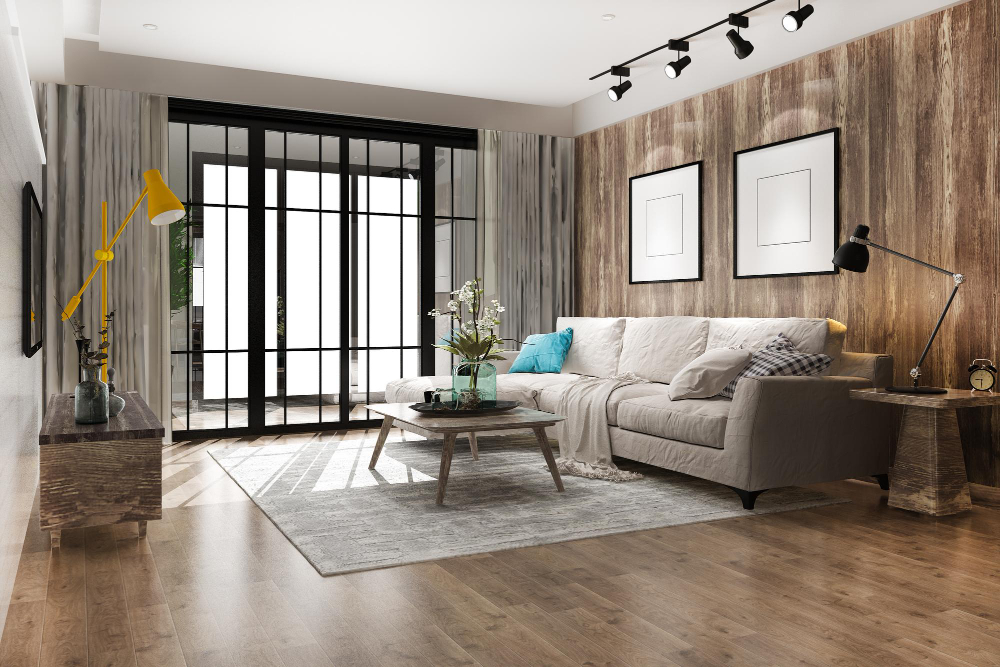
Choosing the Right Color Palette
When it comes to designing your ideal living room, selecting the right color palette is a pivotal decision that sets the tone for the entire space. The colors you choose will significantly impact the room’s ambiance, mood, and overall aesthetics. Here, we will delve deeper into the importance of selecting the right colors and provide practical guidance on how to create a harmonious color scheme for your living room.
Neutral Foundations
One of the fundamental principles of interior design is to start with a neutral foundation. Neutral colors, such as whites, grays, beiges, and soft pastels, create a timeless and versatile backdrop for your living room. These colors serve as a canvas upon which you can layer more vibrant and expressive hues.
Neutral walls not only provide a sense of space but also allow you to change the room’s theme and style effortlessly. They act as a blank canvas, ready to be infused with your personal touch through furniture, accessories, and decor.
Adding Pops of Color
While neutrals form the base of your color palette, adding pops of color is where you can infuse personality and vibrancy into your living room. Here are some strategies to consider:
- Accent Walls: Paint one wall in a bold and contrasting color to create a focal point in the room. This can be an excellent way to add drama and interest without overwhelming the space.
- Accessories: Introduce colorful accessories such as throw pillows, curtains, rugs, and artwork. These elements can be easily replaced or updated to reflect changing seasons or trends.
- Furniture: Opt for furniture pieces that feature your favorite colors. For example, a colorful accent chair or a vibrant sofa can become the centerpiece of your living room.
- Natural Elements: Incorporate natural materials and colors, such as wooden furniture or stone accents, to bring earthy tones into the space.
When choosing pops of color, consider the overall mood you want to create. Warm colors like reds, oranges, and yellows evoke energy and coziness, while cool colors like blues and greens promote relaxation and calm. It’s essential to strike a balance between neutral and vibrant colors to ensure a visually pleasing and well-rounded living room.
Harmonizing the Color Palette
To create a cohesive and harmonious color palette, keep the following tips in mind:
- Color Wheel: Familiarize yourself with the color wheel to understand complementary and analogous colors. Complementary colors are opposite each other on the wheel and create contrast, while analogous colors sit next to each other and offer a harmonious blend.
- Color Psychology: Consider the psychological impact of colors. Reds and oranges can stimulate conversation and energy, while blues and greens promote a sense of serenity. Choose colors that align with the intended use of your living room.
- Sample Swatches: Before committing to a color, obtain sample swatches and test them in your space. Lighting can affect how a color appears, so it’s crucial to see how it looks in different parts of the room throughout the day.
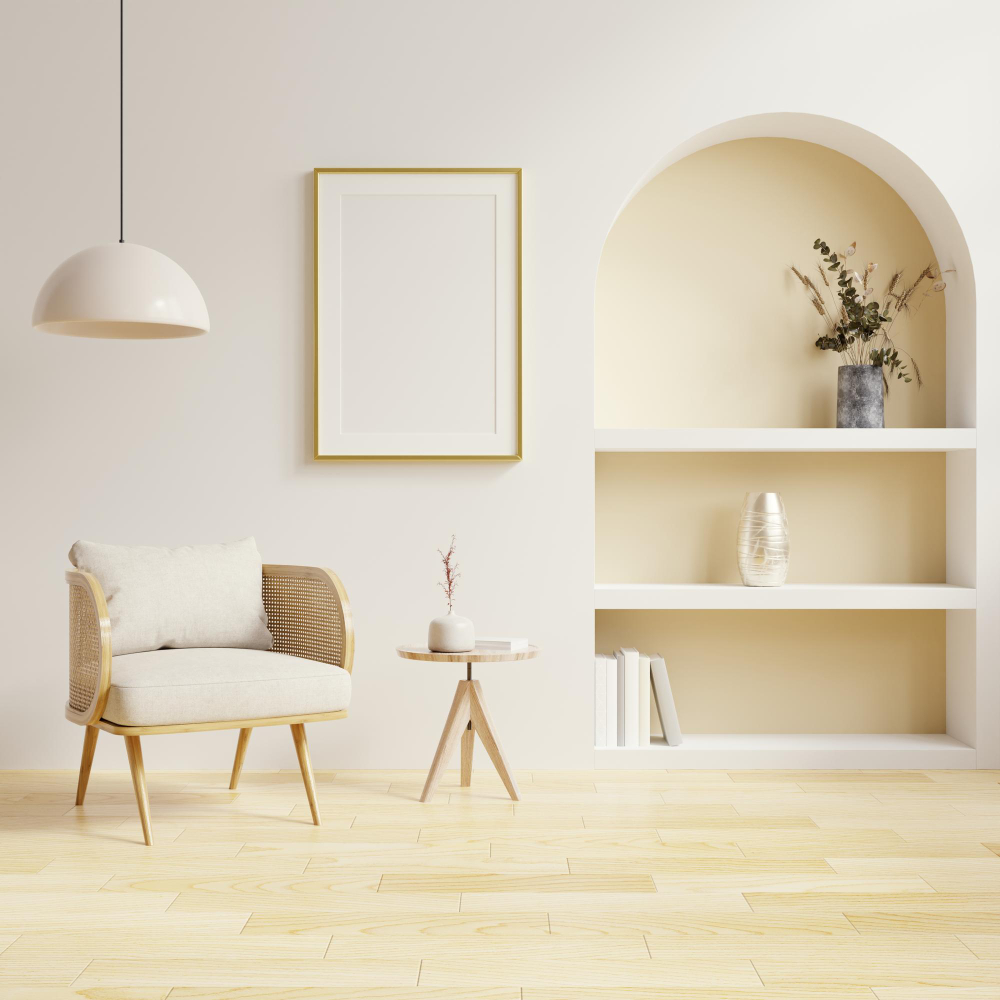
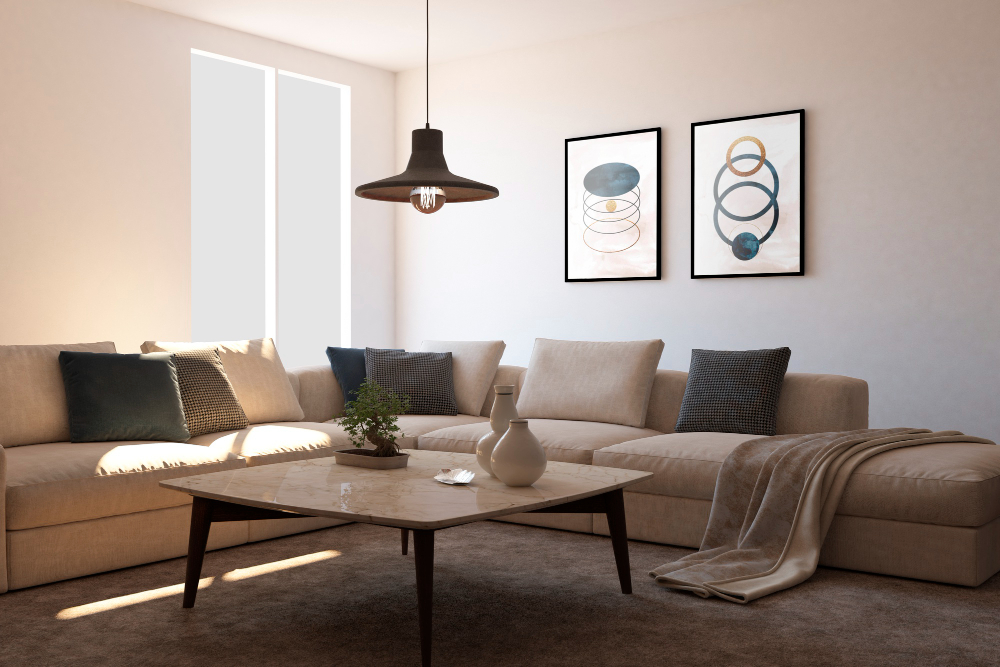
Furniture Selection and Arrangement
Your choice of furniture plays a pivotal role in shaping the comfort and functionality of your living room. To create a harmonious and inviting space, it’s essential to carefully consider both the selection and arrangement of your furniture pieces. Here’s a closer look at how to make the most of this crucial element:
Measuring Your Space
Before you start shopping for furniture, take precise measurements of your living room. Knowing the exact dimensions of your space will help you avoid purchasing pieces that are either too large, making the room feel cramped, or too small, leaving it feeling empty and disjointed. Measure the length, width, and height of the room, as well as the dimensions of doors, windows, and any architectural features. These measurements will serve as your guide when choosing appropriately sized furniture.
Sofa and Seating
- The Right Sofa: The sofa is often the centerpiece of the living room. Select one that not only suits your style but also accommodates your seating needs. Consider factors such as the number of people in your household, the room’s primary function (e.g., lounging or entertaining), and personal preferences regarding material, color, and style. Additionally, think about the sofa’s comfort level, as you’ll likely spend a significant amount of time here.
- Arrangement: Arrange your seating to encourage conversation and interaction. A common arrangement is to place the sofa facing the focal point, whether it’s a fireplace, TV, or a scenic window view. Add complementary seating, such as armchairs or loveseats, to create a balanced and cohesive look. Ensure that there’s a clear and unobstructed path through the room, allowing for easy movement and access.
- Coffee Tables and Side Tables: These functional pieces not only provide a surface for drinks and snacks but also contribute to the overall aesthetics of the room. Choose tables that complement the style of your seating and ensure they are easily accessible from all seating positions.
- TV and Media Units: If your living room includes entertainment components, select a media unit that can neatly house your electronics and cables while blending seamlessly with your decor. Consider wall-mounted options to save floor space.
- Flexibility: If your living room serves multiple functions, such as a home office or a play area, opt for furniture that can be easily reconfigured to accommodate different activities. Modular and convertible furniture pieces are excellent choices for such versatile spaces.
By carefully measuring your space and thoughtfully selecting and arranging your furniture, you can create a living room that not only looks aesthetically pleasing but also functions efficiently and comfortably for both daily living and entertaining. Your furniture choices should align with your style preferences and enhance the overall ambiance of your living room.
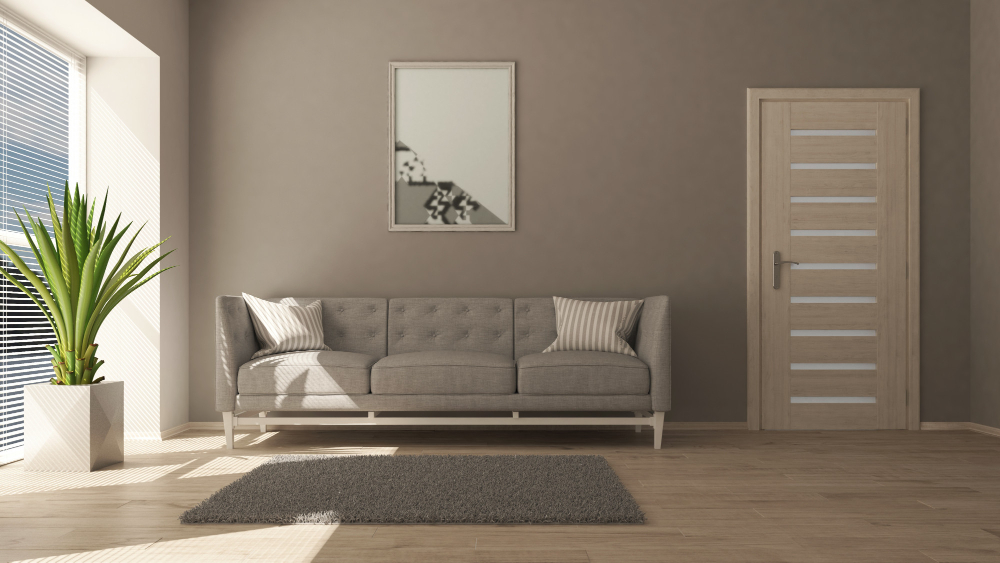
Lighting Matters
Lighting plays a pivotal role in creating the perfect atmosphere in your living room. It’s not just about visibility; it’s about setting the mood and enhancing the overall aesthetics of the space. Here’s a deeper dive into why lighting matters in your living room design:
1. Ambient Lighting
Ambient lighting serves as the foundation of your living room’s lighting scheme. It provides overall illumination, ensuring that the room is adequately lit. Here’s why ambient lighting is essential:
- Warm and Inviting Atmosphere: Ambient lighting fixtures such as ceiling lights or chandeliers can create a warm and inviting ambiance in the living room. Opt for bulbs with warm color temperatures to achieve this effect.
- Uniform Illumination: Properly distributed ambient lighting ensures that there are no dark corners or areas in the room, making it comfortable for various activities.
- Adjustable Dimmers: Consider installing dimmer switches for ambient lighting fixtures. This allows you to control the intensity of the light, perfect for setting the mood for different occasions.
2. Task Lighting
In addition to general illumination, it’s essential to incorporate task lighting in your living room. Task lighting serves specific functions and enhances the room’s functionality:
- Reading Nooks: If you have a reading nook or a cozy corner for quiet activities, install reading lamps or adjustable wall-mounted fixtures. These provide focused light for reading or working.
- Pendant Lights: Over dining or coffee tables, pendant lights can serve both functional and decorative purposes. They add a touch of style while ensuring that the area is well-lit for various activities.
- Artwork Illumination: If you have artwork or a gallery wall in your living room, consider track lighting or wall-mounted picture lights to showcase your pieces effectively.
3. Adding Style and Personality
Beyond their functional aspects, lighting fixtures themselves can be decorative elements that contribute to your living room’s style and personality:
- Chandeliers: A stylish chandelier can serve as a focal point in a formal living room. It adds elegance and sophistication to the space.
- Floor and Table Lamps: Choose floor and table lamps that align with your decor style. These portable fixtures not only provide task lighting but also contribute to the room’s aesthetics.
- Sconces: Wall sconces can be both functional and decorative. They can complement your decor theme and add visual interest to plain walls.
4. Lighting Control
Modern technology allows for sophisticated lighting control systems. Consider these options for optimizing your living room’s lighting:
- Smart Lighting: Invest in smart bulbs and switches that can be controlled via smartphone apps or voice commands. This provides convenience and allows you to create different lighting scenes for various activities.
- Timers and Sensors: Install timers and motion sensors to automate lighting based on occupancy and time of day. This can save energy and enhance security.
The Art of Accessories
Accessories play a pivotal role in shaping the character and ambiance of your living room. These seemingly small details can have a profound impact on the overall aesthetics and functionality of the space. Here, we’ll explore how to master the art of accessories in your living room design:
Personal Touch
Incorporating your personal touch into your living room is essential to make it uniquely yours. Displaying personal photos, artwork, and cherished objects that tell your unique story can add a layer of authenticity and warmth to the space. These personal items serve as conversation starters and create a sense of nostalgia and connection.
Area Rugs
Area rugs are more than just floor coverings; they are design elements that can tie the room together. They define seating areas, add texture, and introduce colors or patterns that complement your overall decor. When choosing an area rug, consider the size, shape, and material to ensure it aligns with the design scheme you have in mind.
Cushions and Throws
One of the simplest yet most effective ways to make your living room cozy and inviting is by adding cushions and throws to your seating. These soft and tactile accessories not only provide comfort but also introduce a variety of textures and colors into the room. Mix and match different cushions and throws to create a layered and visually appealing look.
Curtains and Drapes
Window treatments, such as curtains and drapes, are functional and decorative accessories. They control natural light, offer privacy, and frame your windows. Choose curtains that complement your color palette and style, whether you prefer sheer, heavy, or patterned options. The way you hang them can also influence the perceived height and size of the room.
Decorative Items
Small decorative items can add personality and character to your living room. Consider items like vases, sculptures, candles, and decorative bowls. These pieces can be strategically placed on shelves, coffee tables, or mantels to create focal points and add visual interest.
Wall Art
Don’t underestimate the impact of wall art on your living room’s ambiance. Whether it’s a large statement piece or a gallery wall, art can set the tone for the entire room. Choose artwork that resonates with you and complements your design style. The arrangement and framing of the art can also contribute to the room’s overall aesthetic.
Mirrors
Mirrors are versatile accessories that can serve multiple purposes in your living room. They reflect light, making the room appear brighter and more spacious. Additionally, mirrors can be used decoratively, adding a touch of elegance or whimsy to your decor. Consider unique mirror shapes and frames that align with your style.
Maximizing Storage
One of the essential aspects of creating an ideal living room is efficient storage solutions. A clutter-free space not only enhances the aesthetics but also contributes to a sense of calm and tranquility. Here’s a more detailed exploration of how to maximize storage in your living room:
Multifunctional Furniture
When selecting furniture for your living room, consider pieces that offer clever storage solutions. For example:
- Storage Ottomans: Invest in an ottoman that doubles as a storage unit. It’s a perfect place to hide away blankets, magazines, or remote controls.
- Coffee Tables with Drawers or Shelves: Opt for a coffee table with built-in drawers or shelves. These can house board games, books, or decorative items while keeping the tabletop free for use.
- Sofas with Hidden Compartments: Some modern sofas come with hidden compartments beneath the cushions, providing an excellent space for stowing away items you don’t need daily access to.
Organizational Systems
Incorporate organizational systems to keep your living room tidy and well-structured:
- Built-in Shelves: If space allows, consider built-in shelves or cabinets. These not only provide ample storage but also serve as an elegant display for books, artwork, and decorative items.
- Modular Shelving Units: Modular shelving units offer flexibility in design and can be customized to fit your needs. Use baskets or decorative boxes to conceal items you want out of sight.
- Floating Wall Shelves: Install floating wall shelves to create additional storage space for small items, such as candles, plants, or framed photos.
Creating a Cozy Atmosphere
The living room is often considered the heart of a home, and creating a cozy atmosphere is key to making it a place where you and your guests feel comfortable, relaxed, and welcomed. Here are some essential elements to consider when aiming to achieve that warm and inviting ambiance:
1. Textures and Fabrics
Coziness often begins with the sense of touch. Incorporate an array of soft and tactile textures into your living room. Consider plush cushions and throws for your seating, a fluffy rug underfoot, and curtains or drapes made from rich, heavy fabrics. These elements not only feel inviting but also add visual interest and depth to the room.
2. Warm Color Palette
Choose warm and soothing colors for your living room’s walls and decor. Earthy tones such as soft beiges, warm grays, muted browns, and calming pastels can create a sense of coziness. These colors evoke feelings of comfort and relaxation, making your living room a place where you can unwind after a long day.
3. Soft, Ambient Lighting
Proper lighting plays a pivotal role in setting the mood. Opt for soft, warm lighting sources that create a gentle glow throughout the room. Table lamps, floor lamps, and even candles can provide the ideal ambiance. Dimmer switches can also help you adjust the lighting to suit different occasions, from movie nights to intimate gatherings.
4. Incorporate Natural Elements
Bringing nature indoors can instantly make a space cozier. Consider adding houseplants to your living room decor. Not only do they provide a touch of greenery and aesthetic appeal, but they also contribute to better air quality. Wooden furniture and decor items can also introduce a rustic and inviting feel to your space.
5. Personalize with Memories
Displaying personal items and mementos can infuse your living room with a sense of nostalgia and comfort. Decorate your space with family photos, artwork, and objects that hold sentimental value. These touches will not only make your living room uniquely yours but also spark conversations and connections with your guests.
6. Soft Music and Ambiance
Consider adding background music or soothing sounds to your living room experience. Soft music, nature sounds, or even a crackling fireplace soundtrack can enhance the cozy atmosphere. Today, smart speakers can make it effortless to set the mood with just a voice command.
7. Layered Decor
Layering is a key element in creating a cozy living room. It involves adding depth to your decor with items like throw pillows, blankets, and area rugs. These layers not only provide physical warmth but also contribute to a visually inviting and dynamic space.
By carefully incorporating these elements into your living room design, you can transform it into a haven of coziness. Whether you’re curled up with a book, hosting friends, or simply enjoying a quiet evening, your living room will be the perfect place to relax and unwind.
Conclusion
Designing the perfect living room involves a combination of aesthetics, functionality, and personal style. By carefully considering your vision, color palette, furniture, lighting, accessories, and storage solutions, you can transform your living room into a space that truly feels like home.
By carefully considering your vision, color choices, furniture selection, lighting, accessories, and storage solutions, you can transform this room into a welcoming and functional oasis. Remember that your living room should tell your unique story, blending aesthetics and comfort seamlessly.
FAQs
1. How can I make a small living room appear larger?
To create the illusion of space, use light colors, incorporate mirrors, and choose furniture that doesn’t overwhelm the room.
2. What are some budget-friendly decorating ideas for a living room?
Consider thrift store finds, DIY projects, and repurposing existing furniture to save on decorating costs.
3. How do I maintain a clutter-free living room?
Regularly declutter and assign a designated spot for each item to prevent accumulation.
4. What’s the best way to choose a color scheme for my living room?
Start by selecting a color you love, then build a palette around it, using complementary or analogous colors for balance.
5. How can I incorporate the latest design trends into my living room without a complete overhaul?
Stay updated with accessories and decor items that can be easily swapped out to give your living room a fresh look.

